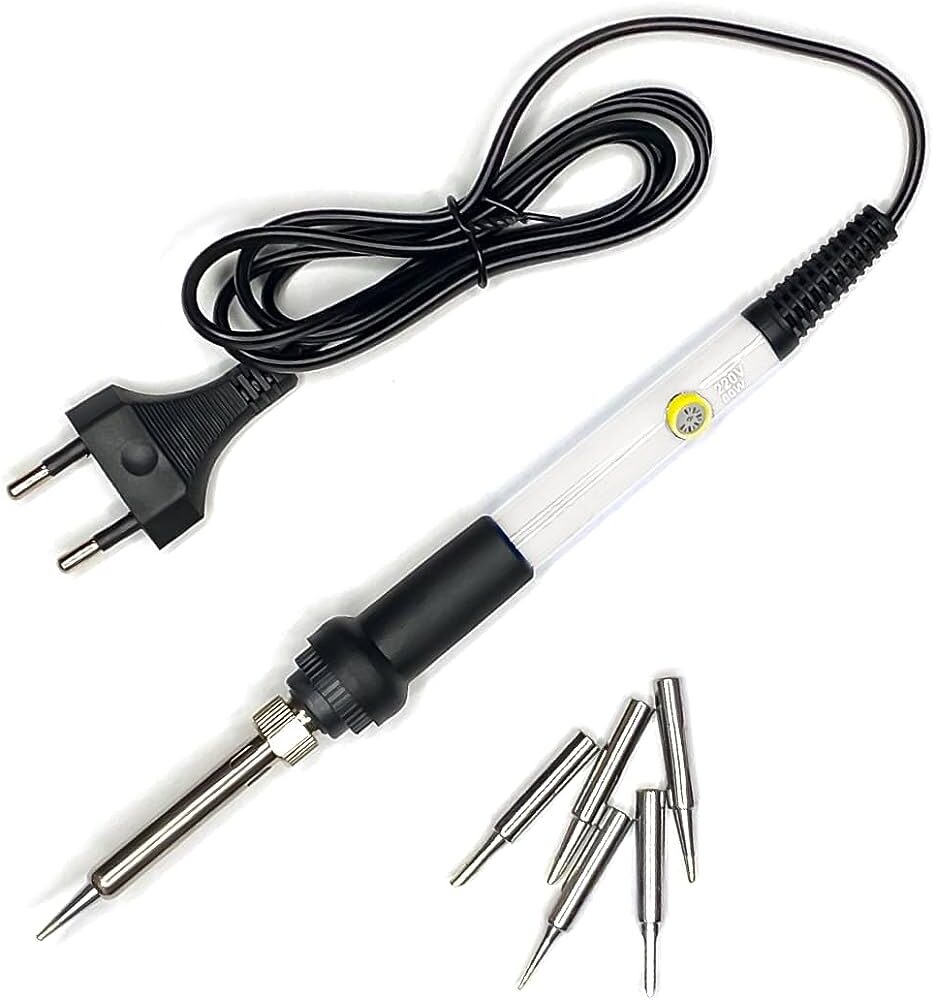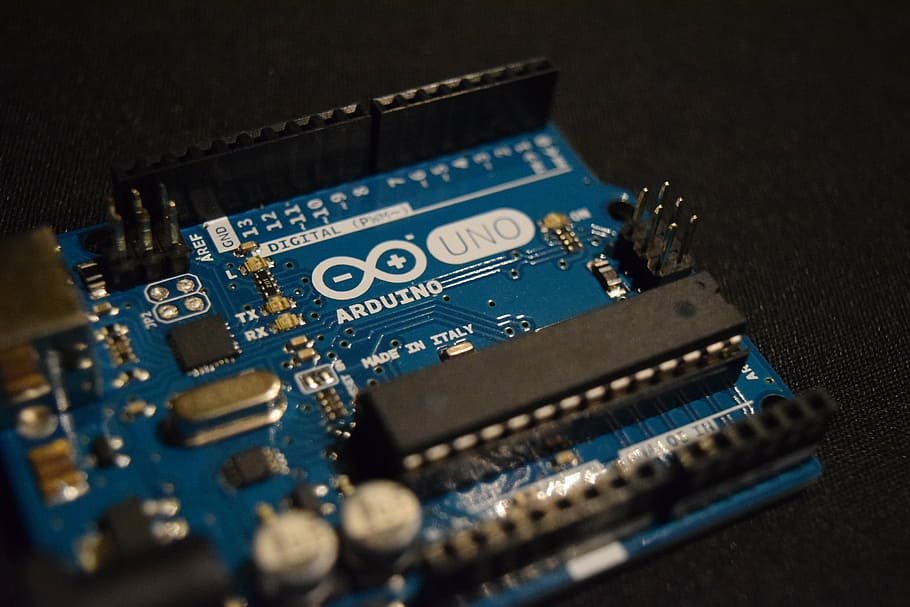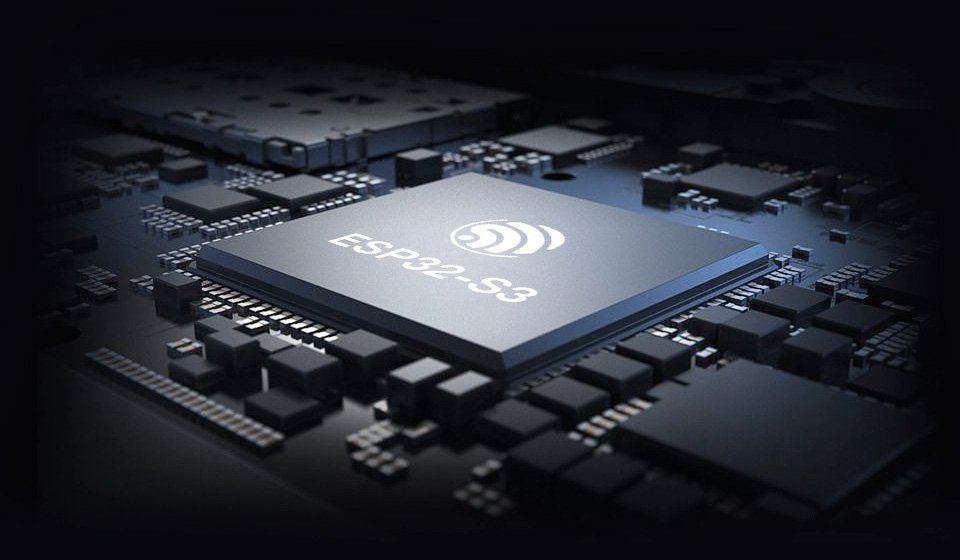Soldering is a technique that has been used for centuries to join metal pieces together. It involves melting a metal alloy called solder to create a bond between two surfaces. To melt the solder, a soldering iron is used. In this article, we will explore how a soldering iron works and the different types available in the market.
A soldering iron is a tool that generates heat to melt the solder. It consists of a metal tip that is heated by an electric current. The tip is made of copper or iron, a good conductor of heat. The tip is coated with a thin metal layer, usually iron or nickel, to prevent corrosion and oxidation.
When the soldering iron is switched on, an electric current flows through the iron’s heating element, which is made of a coil of wire. The heating element is connected to the tip of the iron, which is in contact with the metal surface that needs to be soldered. As the electric current flows through the wire, it heats up the tip of the iron, causing it to become very hot.
The temperature of the soldering iron is critical to the success of the soldering process. If the iron is too cold, the solder will not melt, and if it is too hot, the solder can be burned, or the metal soldered can be damaged. Most soldering irons have temperature control features that allow the user to adjust the heat to the desired level. Some soldering irons also have a built-in thermostat that maintains a constant temperature, which can be useful for precision soldering.
There are several types of soldering irons available, each with its unique features and advantages. The most common types are the standard soldering iron, the soldering gun, and the soldering pencil.
The standard soldering iron is the most basic type and is often used for general-purpose soldering. It has a simple design and is relatively inexpensive. The tip of the standard soldering iron is typically cone-shaped and is available in various sizes. The standard soldering iron is suitable for use with most types of solder, including lead-free solder.
The soldering gun is a more powerful iron designed for heavy-duty soldering. It has a pistol-like shape and is often used for soldering large components or thick wires. The tip of the soldering gun is usually flat and has a large surface area, which makes it easier to heat large areas quickly.
The soldering pencil, also known as a soldering iron pen, is a small and lightweight type of soldering iron that is often used for precision soldering. It has a thin, pointed tip that allows for more precise control when working with small components. The soldering pencil is often used in electronic repair and soldering of delicate parts.
In addition to these standard types, cordless soldering irons are also available that are powered by rechargeable batteries. These soldering irons are ideal for outdoor work or when a power source is unavailable.
Soldering irons are often used in conjunction with a soldering station, which is a device that provides a stable platform for the soldering iron and temperature control. The soldering station consists of a power supply that controls the temperature of the soldering iron, a holder for the iron, and a cleaning sponge. The cleaning sponge is used to clean the tip of the soldering iron and remove any excess solder.
When selecting a soldering iron, it is important to consider the type of work needed, the size and shape of the soldered components, and the type of solder being used. It is also important to consider safety features such as heat-resistant handles and stands and to use the soldering iron in a well-ventilated area to avoid inhaling fumes.
Proper soldering iron maintenance is also essential for ensuring its longevity and effectiveness. This includes cleaning the iron’s tip after each use, storing it in a dry place, and replacing the tip when it becomes worn or damaged.
In summary, a soldering iron generates heat to melt the solder, creating a bond between two metal surfaces. The temperature of the soldering iron is critical to the soldering process’s success, and several soldering irons are available with unique features and advantages. When selecting a soldering iron, it is important to consider the type of work being done, the size and shape of the soldered components, and the solder being used. Proper soldering iron maintenance is also essential for ensuring its longevity and effectiveness.
Metals used for soldering:
Solder is a metal alloy used to form strong, and long-lasting bindings in jewelry, copper pipe connections, and circuit boards. Earlier lead-based were used for soldering. However, lead-based solders are substituted by lead-free solders made of brass, copper, indium, antimony, bismuth, tin, or silver due to recent regulations.
Why use flux before soldering:
Flux chemically cleans and removes contaminants such as grease, dirt, or oxides from metal surfaces before soldering. The flux also facilitates the soldering procedure by changing the surface tension of the molten solder, shielding the metal surface against re-oxidation during soldering. In addition, Rosin flux is majorly used to improve the electrical contact and mechanical strength of electrical junctions.
Conclusion:
As soldering irons work on lower power, they are widely used in applications requiring more heat. The tool is handy, easy to use, offers a hassle-free application, and cools much quicker. Not to mention the soldering iron prices are economical.
Whether you are a beginner, professional, or electronics student, soldering iron will indeed serve your purpose. If you are planning to invest in one, make sure to check out different types of soldering irons offered at attractive prices in one of the reputed online stores.






I was studying some of your articles on this website and I believe
this website is really informative!